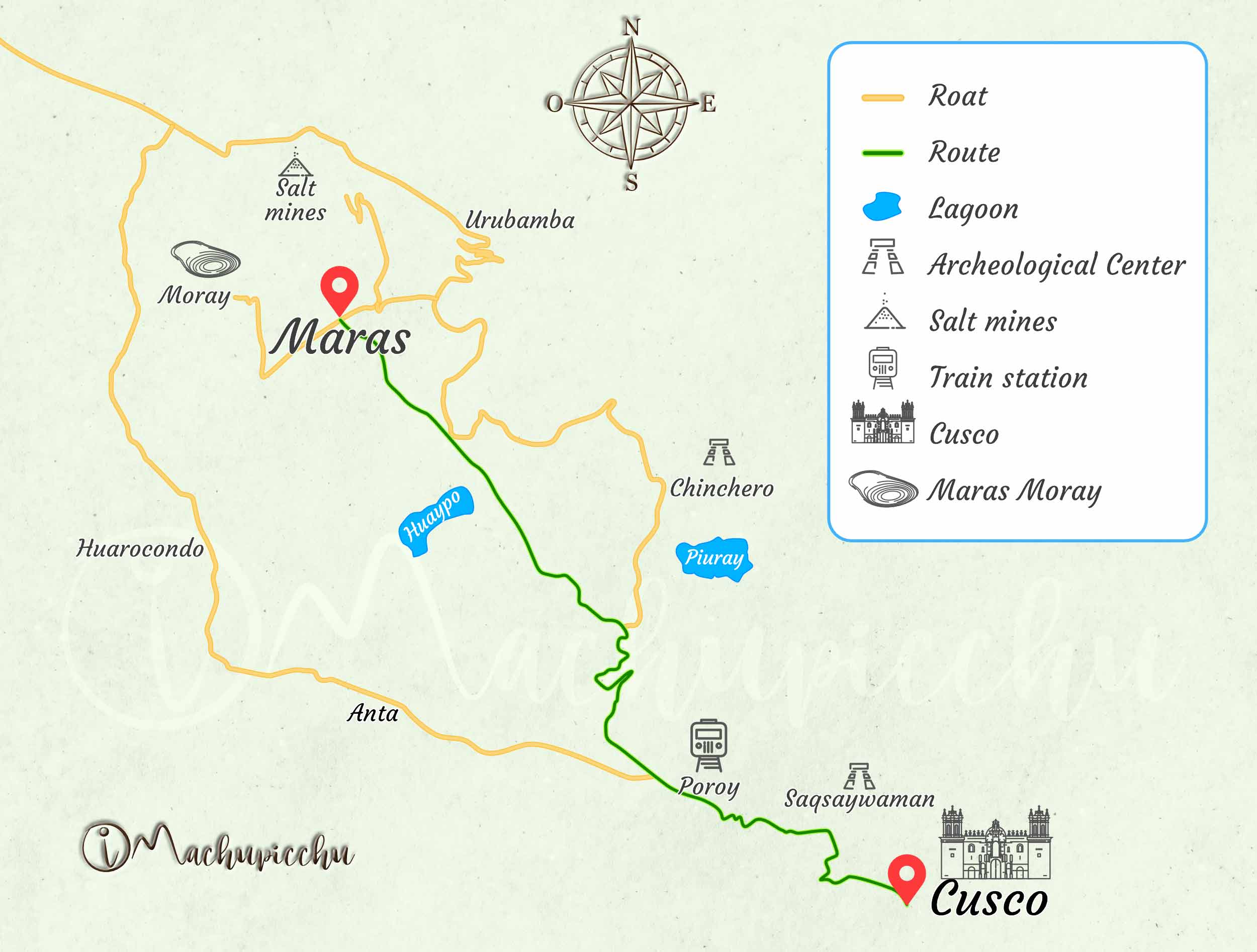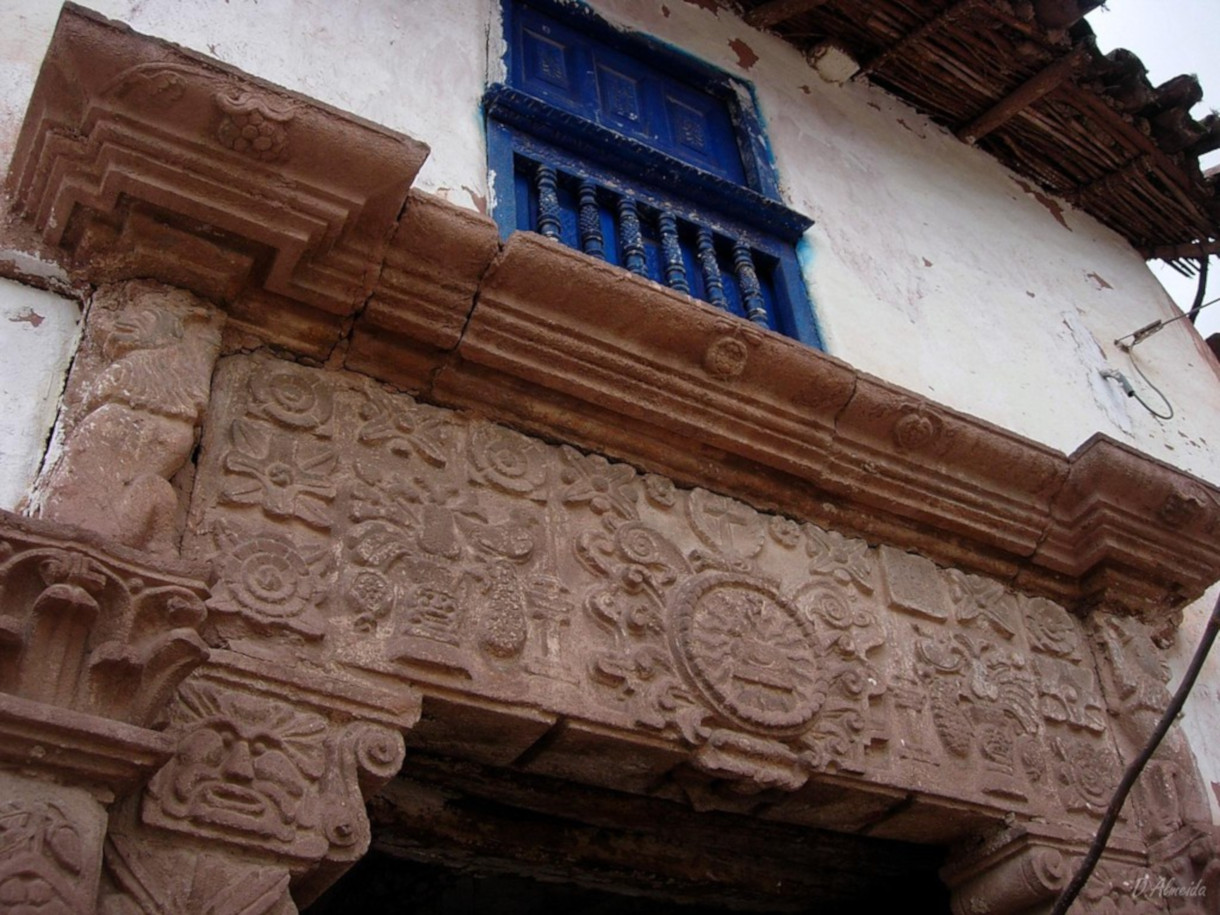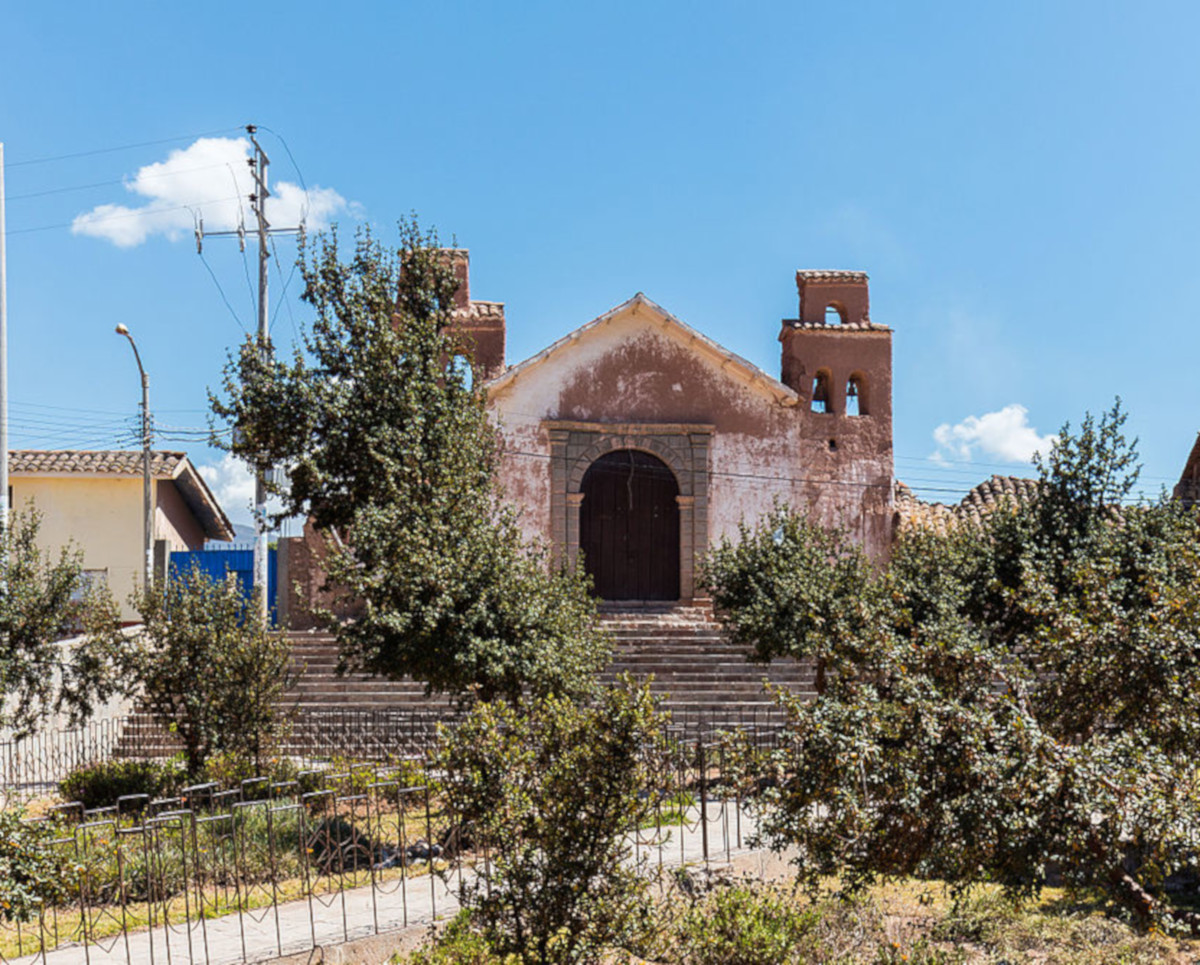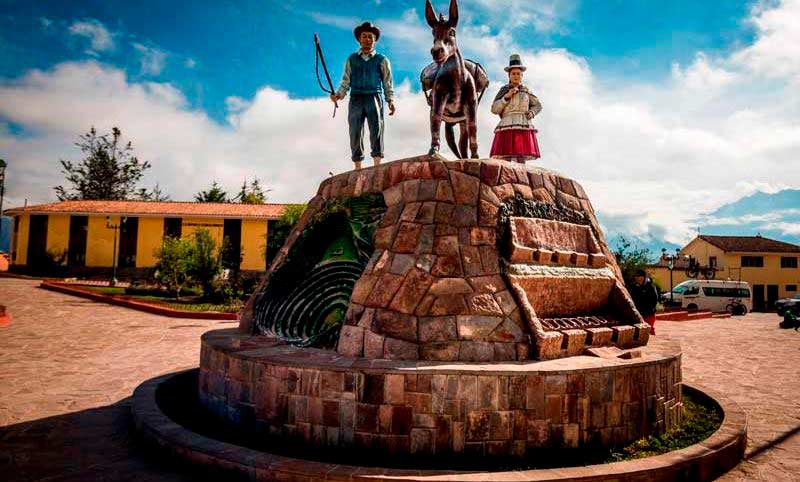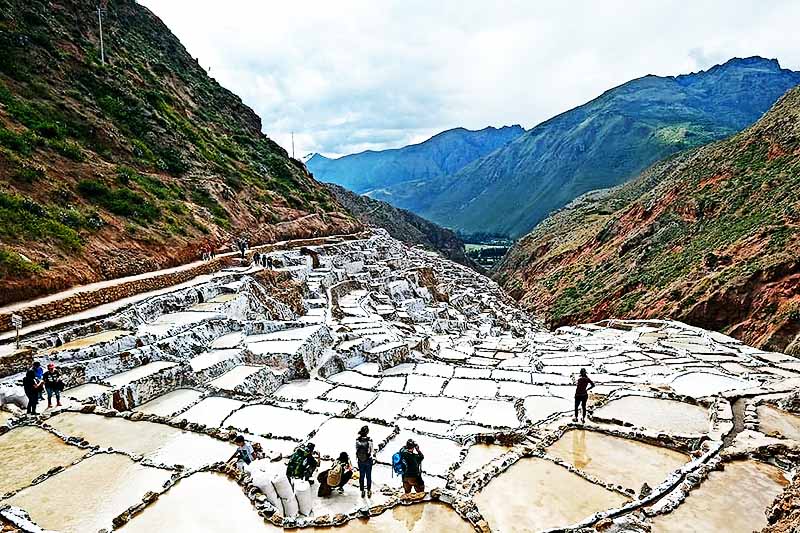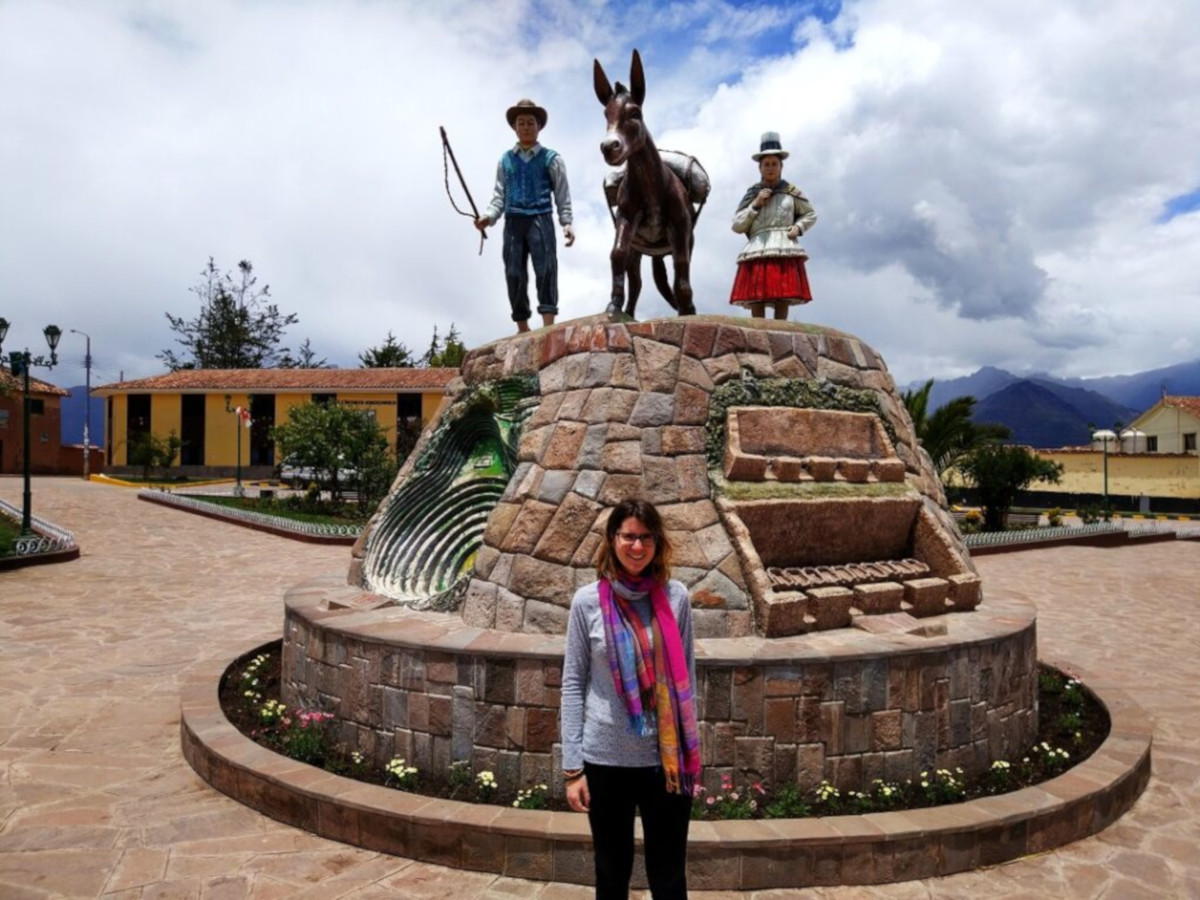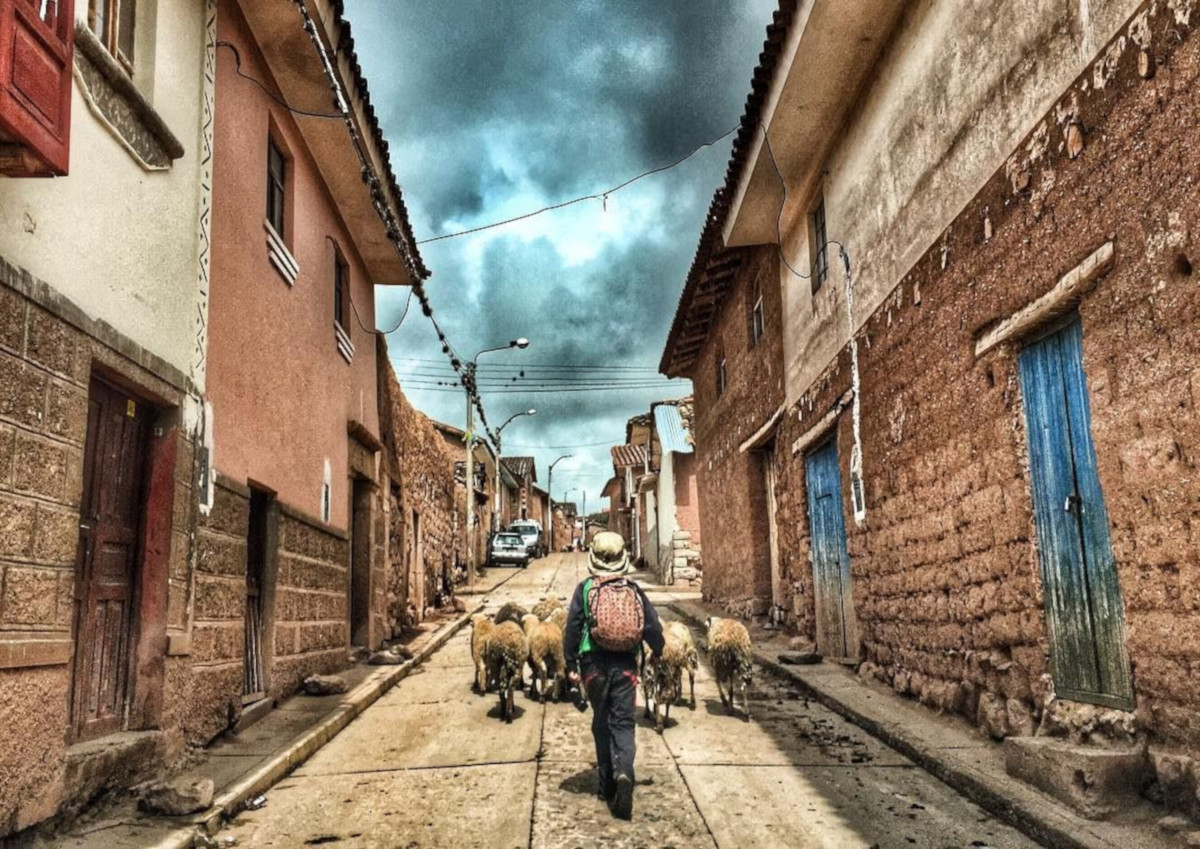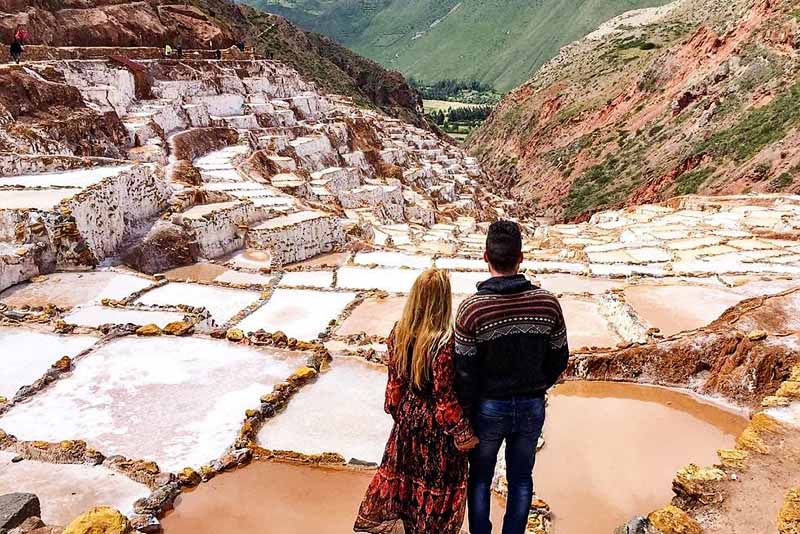The town of Maras
Maras is one of the most visited towns in the Sacred Valley of the Incas mainly due to two tourist attractions: the Salineras de Maras and the circular platforms of Moray. This small town is surrounded by beautiful geography. Here and there you can see snowy mountains and fields. In colonial times it enjoyed a lot of prominence. As a witness of that time you can see its colonial church and its famous facades. Most tourists visit this town through the half-day ‘Tour Maras – Moray’.
- Where is it located? How to go?
- Map to get to the town of Maras
- What to see there?
- A bit of history
- How’s the weather?
- How to go with a tour?
- How to go on my own?
- Images of Maras
- Details about the trip
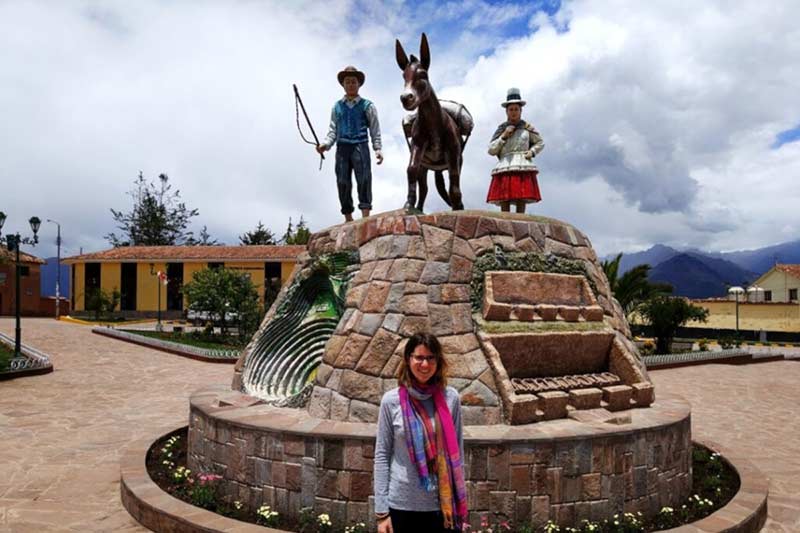
Main square of the town of Maras
AAlmost 1 kilometer from the Main Square, on ‘Belempampa’ street, there are very cheap public transport (the trip costs approximately 1 dollar) that can take you to the ‘Maras detour’. Once there you will recognize the ‘collective taxis’ that for approximately 1 dollar, will take you to the town of Maras. This is the cheapest way to get from Cusco to Maras.
Where is it located? How to go?
- The community of Maras is located 41 kilometers by road from the city of Cusco. It is located in an altitudinal geography of the Sacred Valley of the Incas (3,300 meters above sea level). It is surrounded by the snow-capped Wakay Willka (5,682) and Chikón (5,530) belonging to the so-called ‘Vilcabamba’ mountain range.
- The way more tourists visit this town is through the so-called ‘Tour Maras – Moray’ , which already includes the transport service to the place.
- If you want to go on your own, you must leave from the city of Cusco and take a transport to the ‘Maras detour’ (about 15 minutes after the town of Chinchero). Then, at that point you must take a collective taxi to the town of Maras. In total, the trip will take approximately 1 hour 20 minutes.
Map to get to the town of Maras
What to see there?
- Circular platforms of Moray – These Inca platforms have a size and landscape beauty that attracts attention. For the Incas it was a source of food but, above all, a center for agricultural experimentation. Each concentric circle of these platforms has a particular microclimate. This benefits the cultivation of different products such as: potatoes, goose, quinoa, olluco and even the coca leaf.
- Salt mines of Maras – For millions of years, through a natural process originating from the subsoil and nearby streams; The Salineras de Maras were formed. The natural salt from this place was worked by both the Incas and the current inhabitants of the community. Today there are more than 3 thousand salt wells whose set form one of the best views of Cusco.
- Church of San Francisco de Maras – In 1556, during the colonial era (where Maras enjoyed an economic role), one of the most imposing temples was built outside the city of Cusco. The church was called ‘Temple of San Francisco de Maras’. Like most colonial churches, this one was built on top of an Inca shrine. Its interior stands out for its beautiful paintings from the so-called ‘Cusco school’.
- Facades of the town – Distributed in the town of Maras you can find a set of facades made of stone that belonged to the main families of the town during colonial times. The reliefs on the facades show shield figures and geometric shapes. Today, the facades are preserved as a tourist attraction of the town.
A bit of history
- During the Inca period, Maras was inhabited by a few families who were dedicated to agriculture, an activity that benefited mainly from the nearby presence of the Moray platforms.
- After the Spanish invasion in the 16th century, Maras became a reduction of Indians dedicated to agriculture in favor of the Spanish crown.
- It was at that time that it enjoyed such prominence that it was named “Villa de San Francisco de Asís”, a nomination that provided commercial benefits with Cusco and other towns. It was at that time that the church of San Francisco de Maras was built, which continues to this day.
- After several centuries, the town of Maras no longer has the prominence it enjoyed in the colony. However, it currently has significant income due to the presence of two nearby tourist attractions: the salt mines of Maras and the Inca platforms of Moray.
How’s the weather?
- Maras has a cold temperate climate with temperatures that vary from 21ºC, at most to 1ºC. As minimum. As in the other regions of Cusco, January, February and March are the rainiest days. The rest of the year the rain is intermittent and the days are sunny.
How to go with a tour?
- To visit the town of Maras with a tour, you must hire the ‘Maras-Moray’ service for half a day (5 hours). The service includes: transportation, tickets and tour guide. You can book the tour at any tourism agency, either online or in person.
How to go on my own?
- To visit the town of Maras on your own (without a tour) you just have to take public transport and go to the town.
- Once in the town of Maras, you can choose to visit the Salineras de Maras, the circular platforms of Moray or simply the streets of the town and its church.
- At the door of the tourist sites you can hire a tour guide.
Details about the trip
- During the trip to the town of Maras you can make a stop at the famous town of Chinchero. There you can visit the Inca archaeological site (former palace of the Emperor Túpac Yupanqui) or get to know one of the textile centers of the town. Chinchero is 24 kilometers from the town of Maras.
- In the main square of Maras there is a sculpture of a man and a woman with a donkey; all on a rocky formation where you can see the 3 main tourist attractions of the place: the salt mines, the Moray platforms and the town church.
- The town of Maras is in the middle of the Andes mountain range, so the visitor may suffer some symptoms of ‘altitude sickness’ (nausea, headache, fatigue). These symptoms usually disappear as the visitor adapts to the geography. However, you can get better faster by drinking plenty of water and avoiding fatty foods.
By Ticket Machu Picchu – Last updated, August 15, 2024
